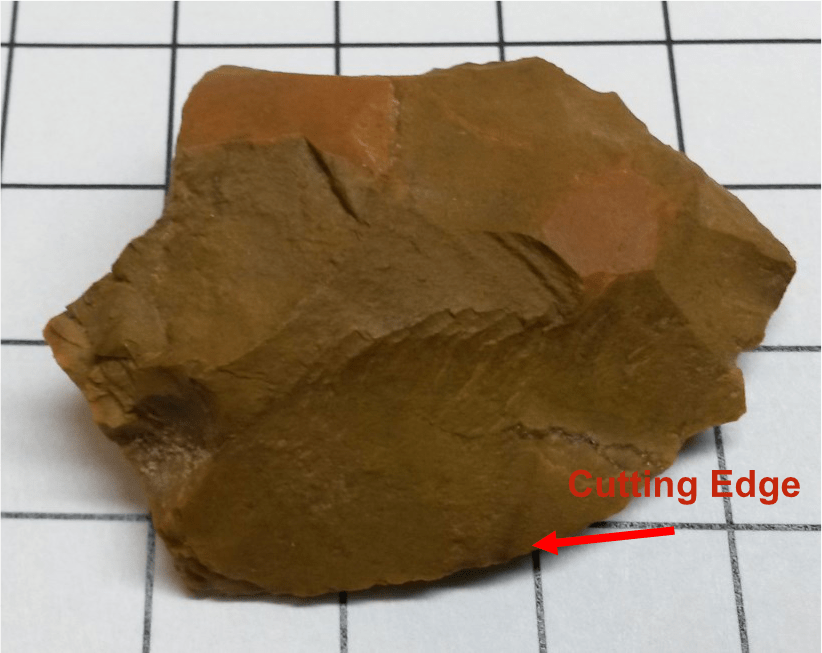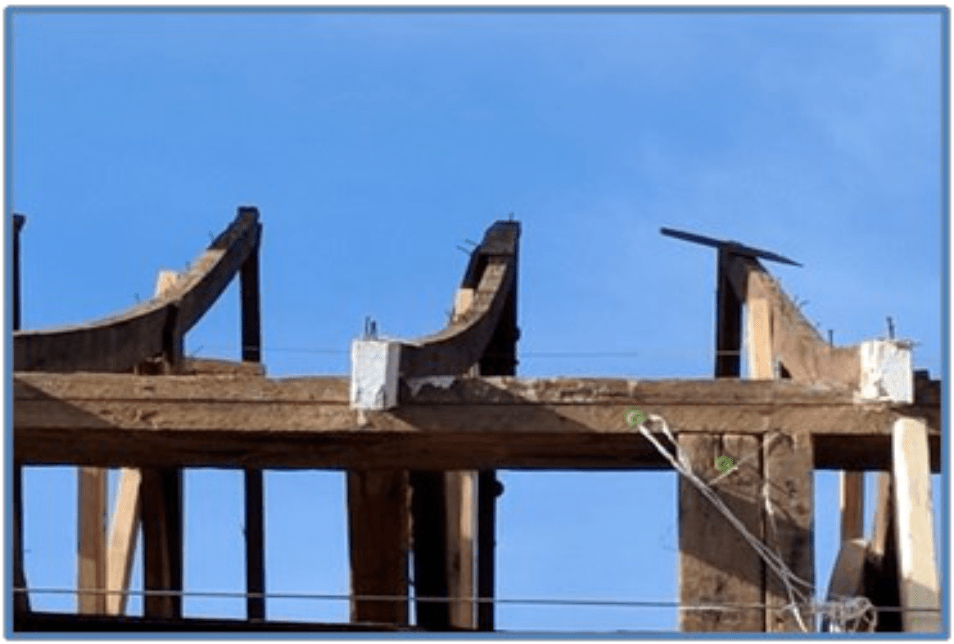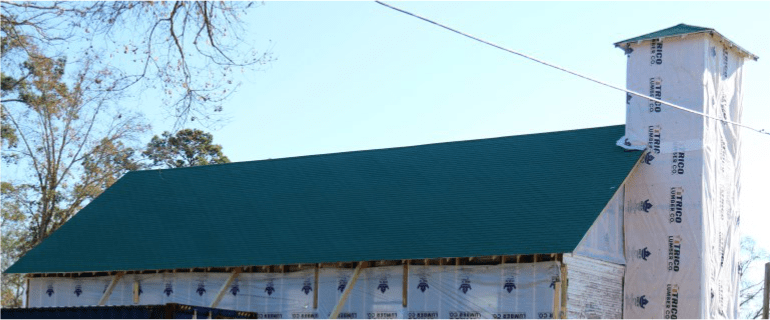 While moving heavy equipment involved in the roof replacement, UMBC restoration workers inadvertently uncovered an historic Caddo Indian artifact next to the sanctuary. It was a surface find exposed by abrasion and erosion in an area that has revealed similar artifacts according to an informant.
While moving heavy equipment involved in the roof replacement, UMBC restoration workers inadvertently uncovered an historic Caddo Indian artifact next to the sanctuary. It was a surface find exposed by abrasion and erosion in an area that has revealed similar artifacts according to an informant.
This 4 cm by 3 cm stone object is made of local chert and has been “worked” to produce a cutting edge for scrapping and slicing.
Chert is a sedimentary rock composed of microcrystalline silicon dioxide. It breaks with a conchoidal fracture, often producing very sharp edges. Early people took advantage of how chert breaks and used it to fashion cutting tools and weapons. The name “flint” is also used with this material. The rock may have come from the river below the site and was conveniently knapped to separate hide from the meat of the kill when needed.
The site where the sanctuary stands shows evidence of having been a campsite for Native Americans some time before the removal of the Caddo Indians to Oklahoma.


